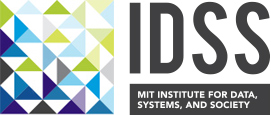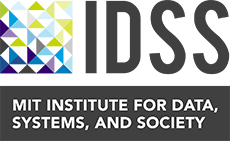
Forecasting a data-driven future
“Everything is changing over time,” says Devavrat Shah, director of the MicroMasters Program in Statistics and Data Science (SDS), a statement that not only sets the stage for the program’s newest course, but also the evolution of the MicroMasters program itself.
The online program, created by the MIT Institute for Data, Systems, and Society (IDSS), is now in its sixth year, and will undergo an exciting expansion this fall with the launch of a new course — “Learning Time Series with Interventions” — in addition to the creation of specialized program tracks focused on methods and time series in data science.
With the new course rolling out to learners this month, Assistant Director of Education Karene Chu says the program’s ability to continue to grow is a point of pride for everyone involved.
“We’re really proud that our program continues to evolve. We do not settle with just having a program that works,” Chu says. “Devavrat has envisioned something that will keep expanding to all the different fields relevant to data science.”
She adds: “We are always looking for ways to enrich the program, making it possible for any practicing data scientist to gain a good education, whatever their specific area of interest may be.”
Thinking beyond
As the founding director of MIT’s Statistics and Data Science Center (SDSC) within IDSS, Shah says he was charged with “building, enabling, and empowering academic programs in statistics and data science across the entire campus.” But his personal vision has always been greater.
“I always interpreted that charter a little bit more broadly, feeling that we should figure out how to do this not just within campus, but beyond,” he says.
In 2018, that is what SDSC and IDSS did with the MicroMasters, says Shah: creating an affordable alternative to traditional brick and mortar education while maintaining the standards and high-quality education for which MIT is renowned.
“In an online world we can remove the gates and barriers to entry, creating a meritocratic admission that says if you want to take a class that is the same caliber as what we offer on campus, but you are at a place in life where that is not possible, this will allow that to happen and at a significantly discounted rate,” Shah said. “But know that if you want to get an MIT-level grade A, you will have to work for it. That is the only gate.”
Chu says that each course run sees over 1,500 participants from 100 countries. While the course is asynchronously run, Chu says it is anything but stagnant, thanks to online forums where learners and teaching assistants communicate and work on projects and quizzes throughout the terms.
A time for change
Originally, all program learners took three core methods courses — probability, machine learning, and fundamental statistics — followed by one of two additional options: either a broad data analysis course for those interested in taking a more general path, or data analysis for social scientists for those looking for something more domain specific.
Adding the new time series course is a first step toward putting the program on a new trajectory toward specialized offerings, with four different certification tracks: general, social sciences, methods, or time series and social science combined. Chu says that along with these additions, learners will begin receiving specified certifications which identify the specialization tied to each track they complete.
“Traditionally we’ve spoken about the basic foundations of data science and statistics, but as you go from there to the next layer of complexity, that is when you start thinking about different aspects and dimensions, and how you can control things,” Shah says. “That’s where time series comes in as a natural next step for people to evolve and mature in new directions.”
From probability to predictions
Building from his statement of “everything is changing over time,” Shah says the new course introduces learners to temporal data analysis, learning structured models, predictions, and forecasting.
“With temporal data, the typical first thing to do is figure out if you can forecast things. What’s going to happen tomorrow? Or maybe you want to fill out missing values found in historical data? Or you want to understand what would happen to an outcome if you changed something?”
Some of the first learners to participate in the new course will be members of the Brescia Institute of Technology (BREIT), a cohort of learners that participate in the program as a part of an IDSS partnership with the social impact lab Aporta.
“I expect the course to strengthen my expertise, enabling me to lead more sophisticated projects and contribute to more valuable insights for the company’s growth,” says Josué Mauricio, a 28-year-old learner and machine learning engineer. “It will immediately enhance my ability to handle the large amounts of historical data my company collects, allowing me to create better forecasting models.”
A strong foundation
With the launch of the new course, Shah is already thinking about the next areas of expansion, with potential courses in the disciplines of physics and sports analytics. Expansion aside, Shah says his greatest hope for the program would be to empower the next generation of what he calls the “data science AI workforce.”
Working at the intersection of AI and data science, Shah firmly believes our ability to fully leverage AI’s potential is only possible with a workforce that understands where and how to apply the information it provides. And that understanding can be found in the foundational concepts learners gain from the MicroMasters SDS program.
“AI and data science are different historical disciplines that are accomplishing similar common end goals,” Shah says. “We are trying to enable individuals to use data to obtain better insights, and use those insights to make better decisions. That’s what this MicroMasters program is empowering learners to do.”
He adds: “We need lots of people who are AI savvy for the next 10 years and we’re already in debt to that. If the MicroMasters can play a small role in this bigger issue, I’ll be extremely happy.”


